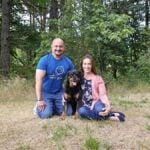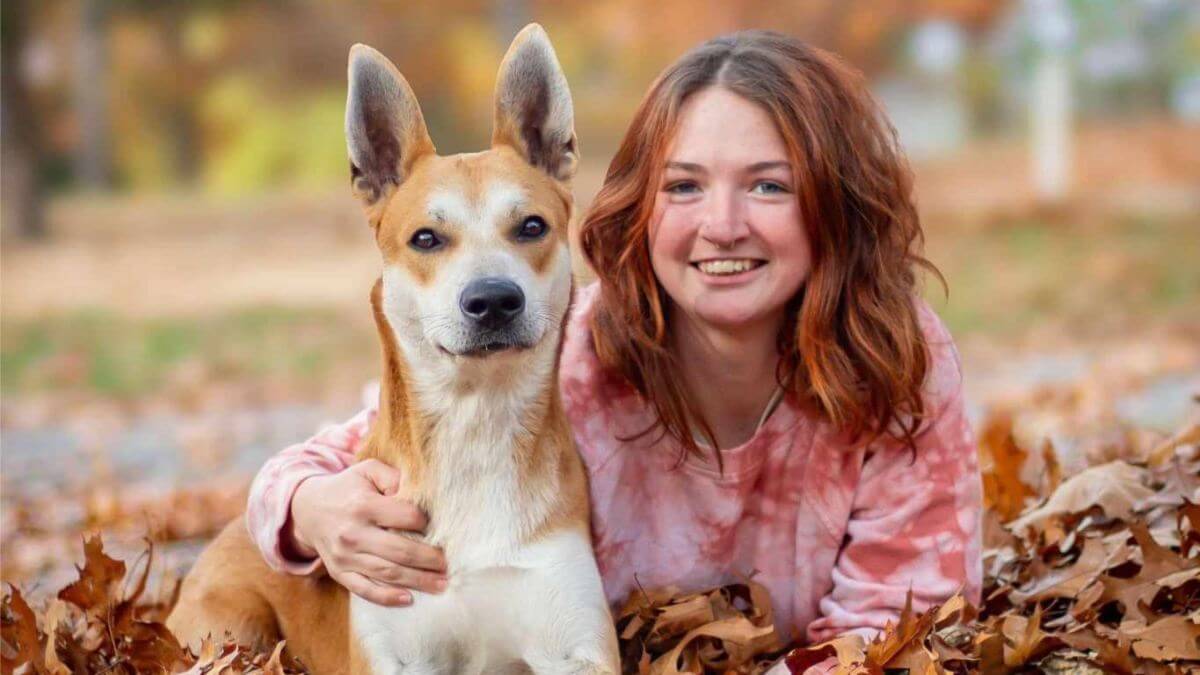


Home » Mercury Steele | Where The Wild Dogs Grow

Mercury Steele
1. My name is Mercury Steele. I live in the Texas panhandle with my partners, where I raise Carolina Dogs under the kennel name Where The Wild Dogs Grow. I grew up in the purebred dog world, with my mother breeding Boxers for the majority of my life, so I basically grew up with a lead in hand. I got my first Carolina Dog in 2017, and my first Portuguese Podengo Grande in 2021, although my love of dogs extends to many breeds beyond these two. I am still a very new breeder, at 25; my first litter of Carolina Dogs turns three in
January 2025.
2. Each breed comes with its own set of challenges, differences, and conversation surrounding it. Carolina Dogs are still very new to AKC, currently in FSS but with Hound designation. Because of the relative rarity of the breed, one must quickly grow accustomed to being asked, “What is that?” As a whole, I feel they are on rocky footing. But they have been garnering attention in recent years, due very largely to a handful of individuals representing our breed publicly and frequently. As in every breed establishing itself, there are political growing pains and a kaleidoscope of visions for the future of the Carolina Dog. Historically, there has been a struggle to define aloofness and how it pertains to modern animals. This is a breed whose primary function for generations has been to survive; incredibly fearful animals will struggle to do that in the modern world.
3. Conformation is a sport like any other. It is a game meant to be played, with its own sets of rules and guidelines. Open Shows are the only way for FSS breeds to show and earn Conformation titles with AKC, and there simply aren’t enough Open Shows available for the amount of dogs trying to get out and show. Miscellaneous breeds are able to compete in all-breed shows, which means more chances to earn titles and be seen, furthering the progression of those breeds. There are Open Shows on each coast, but the middle of the country is lacking in opportunity. Without that visibility, progression towards recognition is more difficult.
There is often an air of dismissal by those who don’t take FSS/MISC seriously, particularly judges. It can be disheartening, but it is part of the process. Without visibility from being able to show our breeds due to too few shows, and without authenticity and encouragement from our judges, our breeds are suffering. How can they continue on their paths to full recognition if our participation is not seen as important and equal?
4. Being in the dog world comes with its own challenges, but taking an interest in rare breeds is like setting a game to hard mode. One of the primary challenges I have encountered is the general absence of numbers, both in new exhibitors and litters being produced. It is a tri-fold problem, affecting showing and breeding, and thus, progression. Without litters, we can’t fulfill the requirements to move up. Without exhibitors, we can’t place show puppies and move forward as a breed, which means fewer litters are being bred. Some breeds produce litters frequently, with waiting lists miles long. FSS and Miscellaneous breeds don’t seem to have that virtue, especially in the Hound-destined breeds. This means our litters must be much more consciously bred than what can be seen in fully-recognized breeds. It also means that as exhibitors of rare breeds, it seems like the pressure is more intense. If we don’t represent our breed to the absolute best of our ability, every moment, every show, it could negatively affect the overall perception of that breed. One bad experience with an exhibitor or individual of a breed can permanently alter how a person sees that breed, which means another potential puppy person or future exhibitor lost.
5. Social media is a boon to the world of purebred animals, not just dogs! The ability to communicate and educate hundreds or thousands of people with the tap of a finger is an advantage our predecessors didn’t have. There are so many ways to communicate and learn now through groups, forums, and educational material. Every positive interaction can be used to educate more people, on any and every subject or topic. However, to that point, it is also important to consider how negative interactions may be broadcast, and one must remember that the Internet does not forget. It can be harmful, depending entirely on what is shared, but I would argue that there is more good to be contributed by social media than is often perceived.
6. The dog show community has many options to revitalize itself. Clubs need to be flexible in regards to membership requirements, and accept that people may not be able to attend meetings in person. Garnering interest in shows from the general public is a part of keeping our sport safe. I think that part of the strain around dog shows currently is a reflection of the “outside” world—animal rights groups are loud and well-funded—and the general perception of responsible breeding is certainly affected by those voices. Putting out more positive information would help with an awareness shift.
7. Overall, the sport is moving in a positive direction, not just for the dogs but for those on the other end of the lead. Recognizing breeder-exhibitors and owner-handlers has been a wonderfully positive step. BPUP being introduced has given an opportunity to everyone of every type or amount of experience to just have fun with their puppies. Sometimes, we have to remember that this is supposed to be fun.